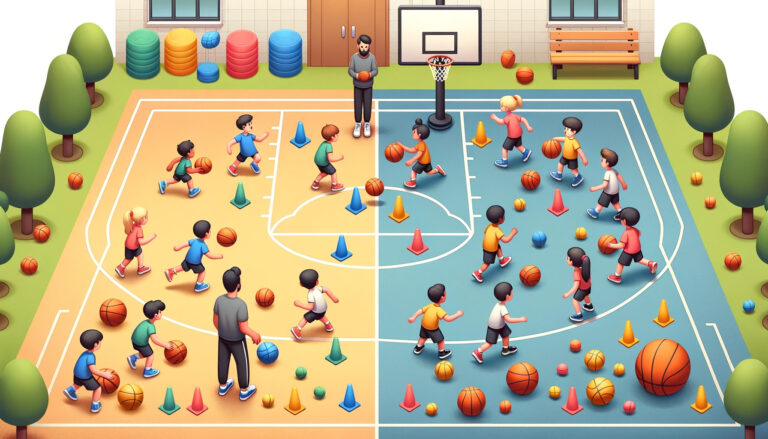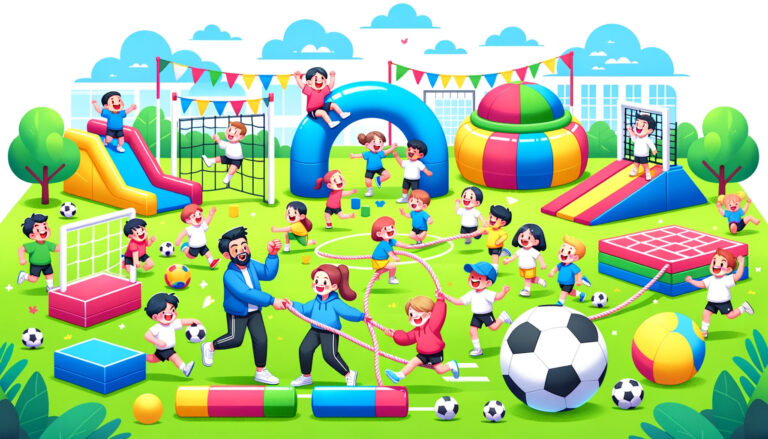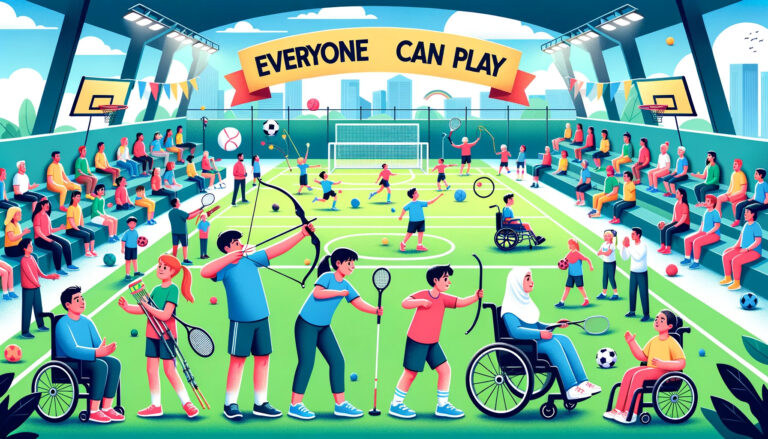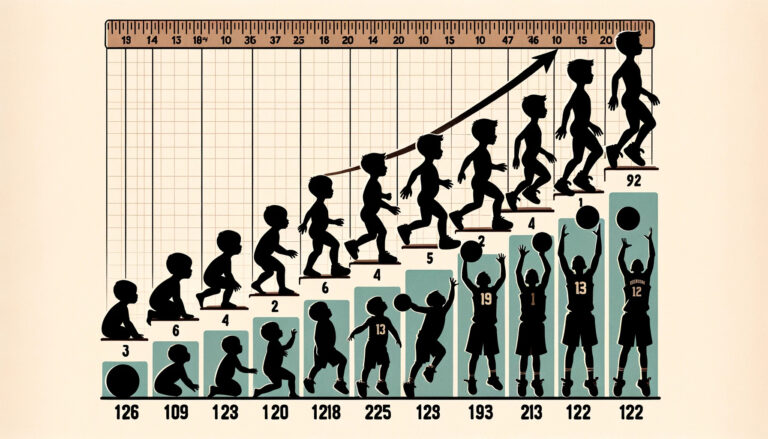Cross-Training for Kids: Benefits and Best Practices
- The Importance of Rest and Recovery in Young Athletes’ Regimens - October 23, 2023
- Boosting Stamina and Endurance in Young Athletes: Tips and Tricks - October 23, 2023
- The Role of Coaches in Shaping Young Athletes - October 23, 2023
The Importance of Cross-Training for Kids
Cross-training for kids is an essential component of their overall development. It involves participating in a variety of physical activities that target different muscle groups and skills. By engaging in activities such as swimming, cycling, martial arts, and team sports, children can enhance their physical fitness in a holistic manner.
One of the key benefits of cross-training is that it promotes the development of well-rounded skills in children. Rather than specializing in just one sport or activity, cross-training allows kids to build a foundation in multiple areas. This not only helps them become more versatile athletes but also reduces the risk of overuse injuries commonly associated with repetitive movements. Moreover, cross-training provides children with a solid physical base, which can then be transferred to other sports and physical endeavors, fostering a lifelong love of fitness and movement.
How Cross-Training Enhances Physical Fitness in Children
Cross-training is a valuable approach to enhancing physical fitness in children. By engaging in a variety of activities that work different muscle groups and target different fitness components, children can develop a well-rounded level of fitness. This is crucial because focusing on a single sport or activity may lead to imbalances in strength, flexibility, and endurance.
One of the benefits of cross-training is that it helps children improve their cardiovascular fitness. Activities such as swimming, cycling, and running all contribute to heart health and can increase a child’s endurance. By engaging in a range of aerobic activities, children can strengthen their heart and lungs, allowing them to participate in physical activities for longer durations without getting tired easily. Additionally, cross-training helps to build muscular endurance as different activities work various muscle groups, leading to improved overall stamina.
Developing Well-Rounded Skills through Cross-Training
Cross-training, with its multidisciplinary approach, offers children an excellent opportunity to develop well-rounded skills. By engaging in various activities, kids can enhance their physical abilities while also honing other important skills. For example, participating in a combination of sports like swimming, gymnastics, and dance not only enhances flexibility and coordination but also cultivates creativity, rhythm, and expression. Moreover, integrating activities that involve problem-solving, such as martial arts or rock climbing, can promote critical thinking and decision-making abilities. By exposing children to a diverse range of activities, cross-training helps develop a wide range of skills essential for their overall growth and development.
Furthermore, cross-training plays a crucial role in enhancing cognitive functions and academic performance in children. Engaging in activities like chess or puzzle-solving alongside physical pursuits challenges the brain and boosts cognitive abilities. Research suggests that physical exercise increases blood flow to the brain, improving attention span, memory, and concentration. By combining physical activity with mental challenges, cross-training effectively stimulates the brain and supports the development of well-rounded skills. Overall, cross-training acts as a catalyst for enhancing both physical and mental prowess in children, providing them with an invaluable opportunity to develop a diverse set of skills.
Boosting Mental and Cognitive Abilities with Cross-Training
Physical fitness is not the only benefit that children can gain from cross-training activities. In fact, engaging in various types of physical activities can also have a positive impact on their mental and cognitive abilities. When children participate in cross-training, they are challenged to think and make quick decisions as they switch between different sports or exercises. This helps to improve their cognitive flexibility and enhances their ability to adapt to new situations. Additionally, cross-training often involves activities that require focus and concentration, such as learning new techniques or strategies. These mental exercises can improve children’s attention span and their ability to stay focused on tasks, which can also translate to better performance in academics and other areas of their lives.
Furthermore, cross-training helps stimulate the brain and promotes the release of endorphins, which are known to improve mood and reduce stress. Engaging in physical activities releases chemicals in the brain that can enhance cognitive function and improve overall mental well-being. Regular participation in cross-training activities can also improve memory and enhance problem-solving skills in children. By challenging their minds and bodies in various ways, children develop a resilient mindset and learn to overcome obstacles, fostering a sense of confidence and perseverance. With these benefits in mind, it is clear that cross-training can play a significant role in boosting mental and cognitive abilities in children.
Cross-Training as a Tool for Injury Prevention in Kids
Engaging in cross-training activities has been found to be an effective tool for injury prevention in kids. By participating in a variety of different activities that work different muscle groups and challenge different physical skills, children can build strength, flexibility, and endurance, which in turn reduces their risk of injury.
One of the key benefits of cross-training is that it helps to prevent overuse injuries. When children specialize in a single sport or activity, they tend to repeat the same movements over and over again, which can put stress on specific muscles, joints, and bones. By cross-training and exposing their bodies to different types of movements, children can reduce the risk of repetitive strain injuries and allow their bodies to rest and recover. Additionally, cross-training helps to improve agility, balance, and coordination, which are all essential skills for preventing falls and other common childhood injuries.
Promoting Teamwork and Social Skills through Cross-Training
Cross-training goes beyond improving physical fitness; it also plays a crucial role in promoting teamwork and social skills in children. Engaging in a variety of activities allows kids to interact with others, fostering collaboration and developing their ability to work effectively in a team setting. Through cross-training, children learn to communicate, cooperate, and support one another, essential skills that are beneficial not only in sports but also in their daily lives.
When participating in cross-training activities, children are exposed to diverse groups of individuals with different strengths, abilities, and backgrounds. This exposure helps them develop empathy and respect for others, as they learn to appreciate and value the unique contributions that each person brings to the team. By working together towards common goals, children understand the importance of teamwork, and they become more adept at coordinating their efforts with others. These experiences build their social skills, such as effective communication, compromise, and conflict resolution, which are vital for building positive relationships and functioning well in group settings. In this way, cross-training not only enhances physical fitness but also molds well-rounded individuals who can thrive both individually and as part of a team.
Choosing the Right Cross-Training Activities for Children
When it comes to choosing the right cross-training activities for children, it is important to consider their interests, abilities, and physical development. One factor to keep in mind is age appropriateness. Younger children may benefit from activities that focus on developing fundamental movements skills such as running, jumping, and throwing, while older children can engage in more complex activities that challenge their coordination, balance, and strength.
In addition to age, it is crucial to consider the child’s individual interests and preferences. Some children may have a natural inclination towards team sports, such as soccer or basketball, while others may enjoy individual activities like swimming or martial arts. By selecting activities that align with a child’s interests, they are more likely to stay engaged and motivated, ultimately reaping the benefits of cross-training. Moreover, it is essential to ensure that the chosen activities are suitable for the child’s current fitness level to prevent any unnecessary strain or potential injuries.
Structuring an Effective Cross-Training Program for Kids
Creating an effective cross-training program for kids requires careful consideration and planning. The first step is to assess the individual child’s needs and abilities. This can be done through a thorough physical evaluation and discussion with the child and their parents to understand their goals and preferences. Once these factors are determined, a variety of activities should be included in the program to promote overall fitness and skill development. This may include activities such as running, swimming, cycling, strength training, and team sports. It is important to provide a balance of cardiovascular exercise, strength training, and flexibility training to ensure comprehensive development.
In addition to the types of activities included, it is also essential to consider the frequency and duration of each session. An effective cross-training program for kids should include regular workouts, ideally three to five times per week, with each session lasting between 30 minutes to one hour. The duration and intensity of the workouts should be age and skill-appropriate, gradually increasing as the child progresses. It is crucial to emphasize the importance of rest days to allow for recovery and prevent overtraining. Structuring the program in a way that gradually increases the difficulty and adds variety over time will keep the child engaged and motivated throughout their cross-training journey.
Overcoming Challenges and Setting Realistic Goals in Cross-Training
Setting realistic goals and overcoming challenges are crucial aspects of cross-training for kids. When children engage in different activities, they may encounter various obstacles that can hinder their progress. By setting realistic goals, children can have a clear vision of what they want to achieve and work towards it in a focused manner. However, it is essential for parents and coaches to guide children in setting goals that are attainable and aligned with their abilities. Unrealistic goals can lead to frustration and demotivation, potentially causing children to lose interest in cross-training.
In addition to goal setting, overcoming challenges is an integral part of the cross-training journey for kids. Whether it’s learning new skills, pushing physical limits, or facing competitive situations, challenges provide valuable opportunities for growth and development. It is important to teach children resilience and perseverance so that they can face setbacks and obstacles with determination. By instilling a positive mindset and teaching children to embrace challenges as learning experiences, they can develop the confidence and skills needed to overcome any hurdles they may encounter in their cross-training journey.
Encouraging Consistency and Long-Term Commitment to Cross-Training for Kids
Commitment to cross-training for kids is not something that happens overnight. It requires patience, perseverance, and continuous encouragement from parents and coaches. One key strategy to encourage consistency and long-term commitment is to make cross-training enjoyable for children. By incorporating fun and engaging activities, kids are more likely to stay motivated and committed to their training. It is important to let children explore different cross-training activities and find the ones that they truly enjoy. This way, they will be more inclined to stick with the program and develop a lifelong commitment to their fitness journey. Additionally, setting realistic goals and acknowledging their achievements along the way can also help instill a sense of commitment and drive in children, as they see the positive impact of their efforts.






